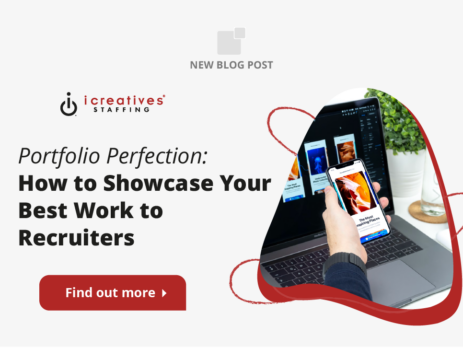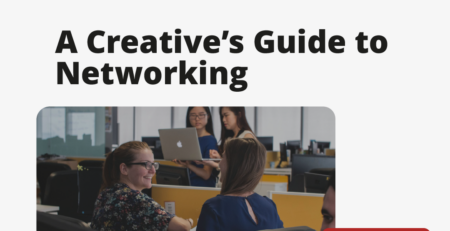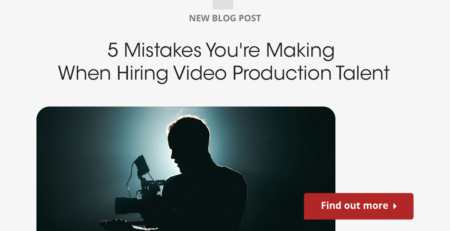Portfolio Perfection: How to Showcase Your Best Work to Recruiters
Creating a portfolio that stands out to recruiters is crucial in today’s competitive job market. Your portfolio is more than just a collection of your work; it’s a reflection of your skills, creativity, and professionalism. Whether you’re a designer, writer, or developer, showcasing your best work effectively can make a significant difference in landing your dream job.
Recruiters often sift through numerous portfolios, making it essential to create one that captures their attention. A well-curated portfolio not only highlights your strengths but also tells a story about your career journey. It’s an opportunity to demonstrate your expertise, versatility, and unique style.
In this article, we’ll explore how to create a portfolio that showcases your best work to recruiters. From selecting the right pieces to designing an engaging layout, we’ll cover the key elements that make a portfolio stand out. We’ll also discuss how to tailor your portfolio to different job opportunities and industries.
Understanding what recruiters look for in a portfolio is the first step in creating one that impresses. By focusing on quality over quantity and presenting your work in a cohesive manner, you can make a lasting impression. Your portfolio should be a testament to your skills and a showcase of your potential.
Whether you’re a seasoned professional or just starting your career, a well-crafted portfolio is a powerful tool in your job search arsenal. Let’s dive into the strategies and tips that will help you create a portfolio that resonates with recruiters and sets you apart from the competition.
Most Asked Questions
- How do I choose the right pieces for my portfolio?
- What design elements make a portfolio stand out?
- How can I tailor my portfolio for different industries?
- What are common mistakes to avoid in a portfolio?
- How can I incorporate feedback to improve my portfolio?

How do I choose the right pieces for my portfolio?
Selecting the right pieces for your portfolio is crucial in showcasing your skills and expertise. Here’s how to make the best choices:
1. Align with Your Career Goals: Choose pieces that reflect the type of work you want to do. If you’re aiming for a design role, include projects that highlight your design skills and creativity.
2. Showcase Your Best Work: Quality over quantity is key. Select your strongest pieces that demonstrate your skills and creativity. Avoid including work that doesn’t meet your standards.
3. Highlight Versatility: Include a variety of work that showcases your ability to handle different tasks and challenges. This demonstrates your adaptability and range.
4. Consider the Audience: Think about what recruiters in your industry are looking for. Tailor your portfolio to meet their expectations and highlight relevant skills.
5. Tell a Story: Arrange your pieces in a way that tells a story about your career journey. This helps recruiters understand your growth and development.
6. Include Personal Projects: Personal projects can showcase your passion and creativity. They provide insight into your interests and what drives you as a professional.
7. Keep It Updated: Regularly update your portfolio with new work. This shows that you are active in your field and continuously improving your skills.
8. Seek Feedback: Get feedback from peers or mentors to ensure your portfolio is effective. They can provide valuable insights and suggestions for improvement.
By carefully selecting the right pieces, you can create a portfolio that effectively showcases your talents and resonates with recruiters.
What design elements make a portfolio stand out?
Design plays a crucial role in making your portfolio stand out. Here are some key design elements to consider:
1. Clean and Professional Layout: A clean and organized layout makes it easy for recruiters to navigate your portfolio. Use consistent fonts, colors, and spacing to create a cohesive look.
2. Visual Hierarchy: Use visual hierarchy to guide the viewer’s eye to the most important information. This can be achieved through size, color, and placement of elements.
3. High-Quality Images: Ensure that all images in your portfolio are high-quality and professionally presented. Blurry or pixelated images can detract from your work.
4. Interactive Elements: Incorporate interactive elements, such as clickable links or videos, to engage the viewer. This can make your portfolio more dynamic and memorable.
5. Consistent Branding: Your portfolio should reflect your personal brand. Use consistent branding elements, such as logos and color schemes, to create a professional image.
6. Responsive Design: Ensure your portfolio is accessible on various devices, including smartphones and tablets. A responsive design ensures a seamless user experience.
7. Clear Navigation: Make it easy for recruiters to find the information they need. Use clear navigation menus and labels to guide them through your portfolio.
8. Personal Touch: Add a personal touch to your portfolio, such as a short bio or statement about your work. This helps recruiters connect with you on a personal level.
By incorporating these design elements, you can create a portfolio that not only showcases your work but also leaves a lasting impression on recruiters.
How can I tailor my portfolio for different industries?
Tailoring your portfolio for different industries involves understanding the specific needs and expectations of each sector. Here’s how to do it:
1. Research the Industry: Understand the trends, challenges, and expectations of the industry you’re targeting. This will help you tailor your portfolio to meet their needs.
2. Highlight Relevant Skills: Focus on skills and projects that are relevant to the industry. This demonstrates your understanding and capability in that field.
3. Use Industry-Specific Language: Use terminology and language that resonate with professionals in the industry. This shows that you are familiar with their world.
4. Include Industry-Specific Projects: If possible, include projects that are directly related to the industry. This provides concrete examples of your experience and expertise.
5. Tailor the Design: Adjust the design elements to align with industry standards. For example, a portfolio for a tech industry may have a more modern and sleek design.
6. Showcase Adaptability: Highlight your ability to adapt and work in different environments. This is particularly important if you’re transitioning between industries.
7. Personalize the Introduction: Write a personalized introduction or cover letter for each industry. This shows your genuine interest and commitment.
8. Seek Industry Feedback: Get feedback from professionals within the industry to ensure your portfolio aligns with their expectations.
By tailoring your portfolio to different industries, you can increase your chances of resonating with recruiters and securing opportunities in your desired field.
What are common mistakes to avoid in a portfolio?
Avoiding common mistakes in your portfolio can enhance its effectiveness. Here are some pitfalls to watch out for:
1. Overloading with Content: Including too much content can overwhelm recruiters. Focus on quality over quantity and select your best work.
2. Lack of Focus: A portfolio without a clear focus can confuse recruiters. Ensure your portfolio aligns with your career goals and highlights relevant skills.
3. Poor Design: A cluttered or unprofessional design can detract from your work. Invest time in creating a clean and cohesive layout.
4. Ignoring Mobile Optimization: Failing to optimize your portfolio for mobile devices can limit accessibility. Ensure your portfolio is responsive and easy to navigate on all devices.
5. Neglecting Updates: An outdated portfolio can give the impression that you’re not active in your field. Regularly update your portfolio with new work and achievements.
6. Lack of Personalization: A generic portfolio can fail to connect with recruiters. Add a personal touch, such as a bio or statement about your work.
7. Ignoring Feedback: Failing to seek or incorporate feedback can limit your portfolio’s effectiveness. Get input from peers or mentors to improve your portfolio.
8. Missing Contact Information: Ensure your contact information is easy to find. This allows recruiters to reach out to you easily.
By avoiding these common mistakes, you can create a portfolio that effectively showcases your talents and resonates with recruiters.
How can I incorporate feedback to improve my portfolio?
Incorporating feedback is essential for refining your portfolio and enhancing its effectiveness. Here’s how to do it:
1. Seek Diverse Perspectives: Gather feedback from a variety of sources, including peers, mentors, and industry professionals. This provides a well-rounded view of your portfolio’s strengths and areas for improvement.
2. Be Open to Criticism: Approach feedback with an open mind and a willingness to learn. Constructive criticism can provide valuable insights for improvement.
3. Identify Common Themes: Look for common themes or suggestions in the feedback you receive. This can help you identify key areas to focus on.
4. Prioritize Changes: Not all feedback may be relevant or feasible. Prioritize changes that align with your goals and enhance the overall quality of your portfolio.
5. Make Iterative Improvements: Incorporate feedback gradually and make iterative improvements. This allows you to test changes and assess their impact.
6. Test with Your Audience: Share your updated portfolio with your target audience or industry professionals to gather additional feedback and ensure it resonates with them.
7. Reflect on Your Goals: Consider how the feedback aligns with your career goals and aspirations. Ensure that changes enhance your portfolio’s ability to showcase your skills and expertise.
8. Keep Learning: Use feedback as an opportunity to learn and grow. Continuously seek opportunities for improvement and development.
By actively incorporating feedback, you can create a portfolio that effectively showcases your talents and resonates with recruiters.
Conclusion
Creating a portfolio that stands out to recruiters is a vital step in advancing your career. By carefully selecting the right pieces, incorporating effective design elements, and tailoring your portfolio to different industries, you can make a lasting impression. Avoiding common mistakes and actively incorporating feedback further enhances your portfolio’s effectiveness.
Understanding what recruiters look for in a portfolio allows you to present your work in a way that highlights your skills and potential. By focusing on quality over quantity and presenting your work in a cohesive manner, you can create a portfolio that resonates with recruiters and sets you apart from the competition.
Whether you’re a seasoned professional or just starting your career, a well-crafted portfolio is a powerful tool in your job search arsenal. Embrace the strategies and tips outlined in this article to create a portfolio that showcases your best work and opens doors to new opportunities.
Remember, your portfolio is more than just a collection of work; it’s a reflection of your skills, creativity, and professionalism. By investing time and effort into creating a portfolio that stands out, you can make a significant difference in landing your dream job.
As you continue to develop your portfolio, stay open to feedback and be willing to adapt. The creative industry is constantly evolving, and your portfolio should evolve with it. By staying proactive and continuously improving, you can ensure your portfolio remains relevant and impactful.
Ultimately, a well-crafted portfolio is a testament to your skills and a showcase of your potential. By following the strategies and tips outlined in this article, you can create a portfolio that resonates with recruiters and helps you achieve your career goals.
In today’s competitive market, finding the right creative and marketing expert can be a challenge. But with icreatives, you’re in experienced hands. With 37 years in staffing and a track record of matching more than 10,000 employees to over 1,000 companies worldwide, we know how to connect you with the best. Plus, you only pay if you hire—there’s no risk, only results. Ready to find your perfect creative or marketing expert? HIRE WITH ICREATIVES today!












